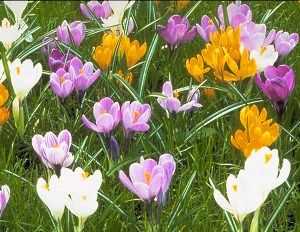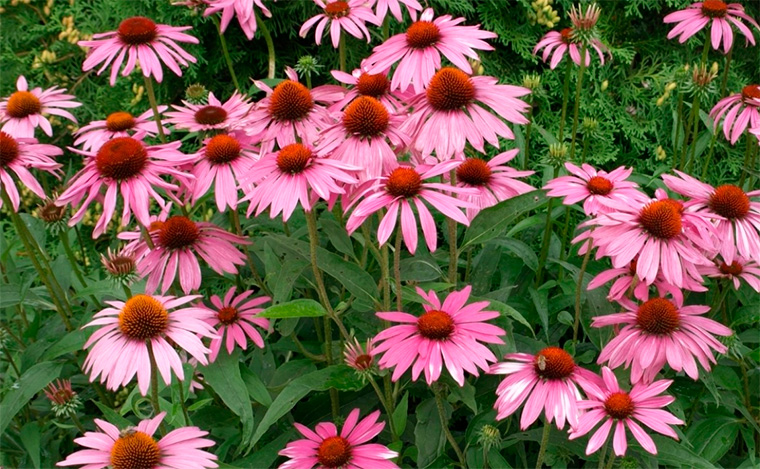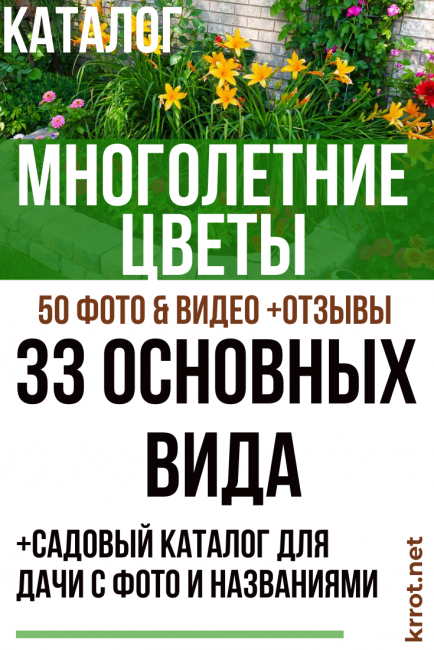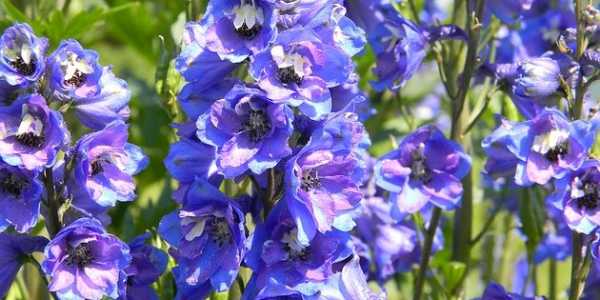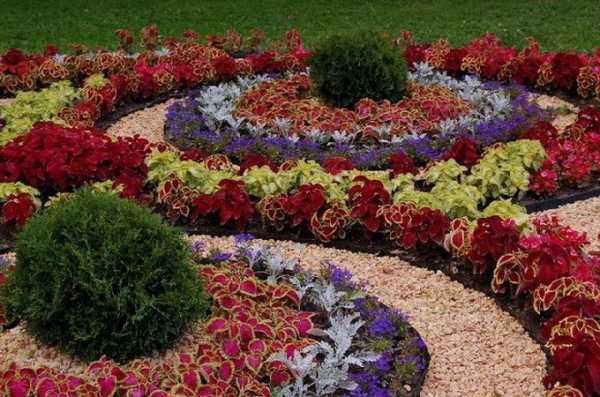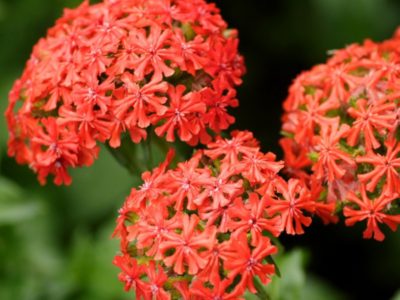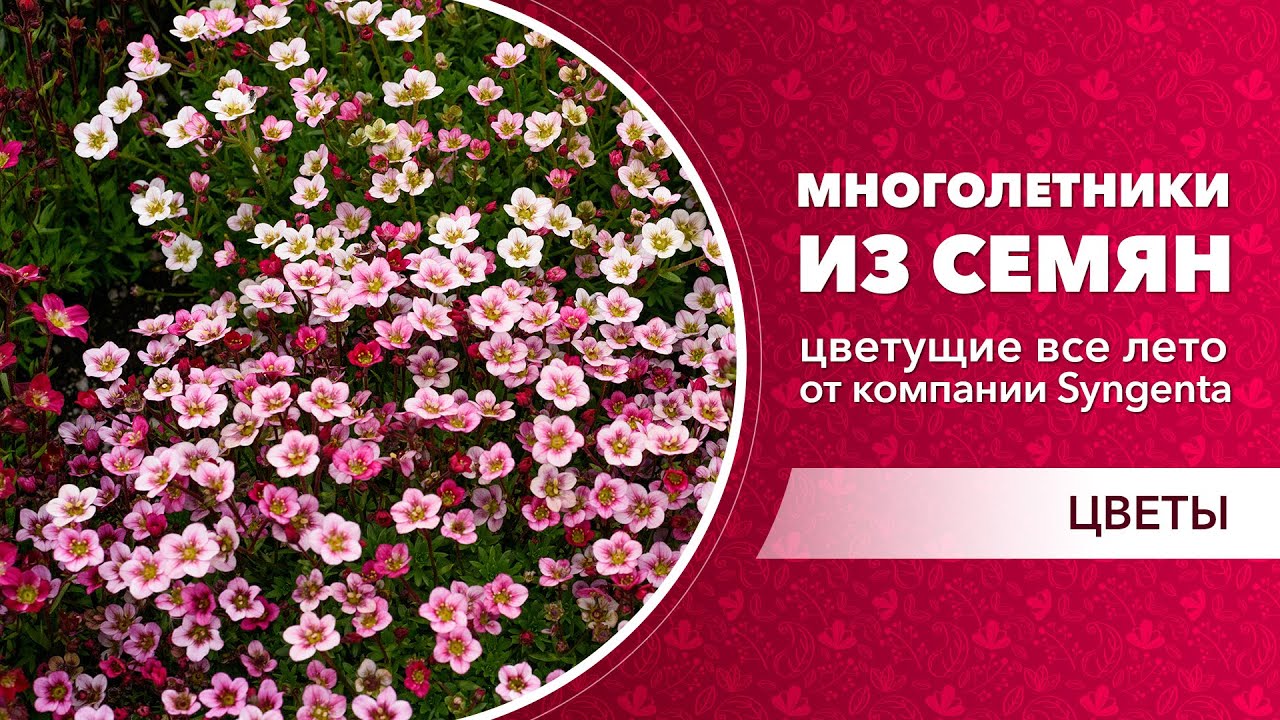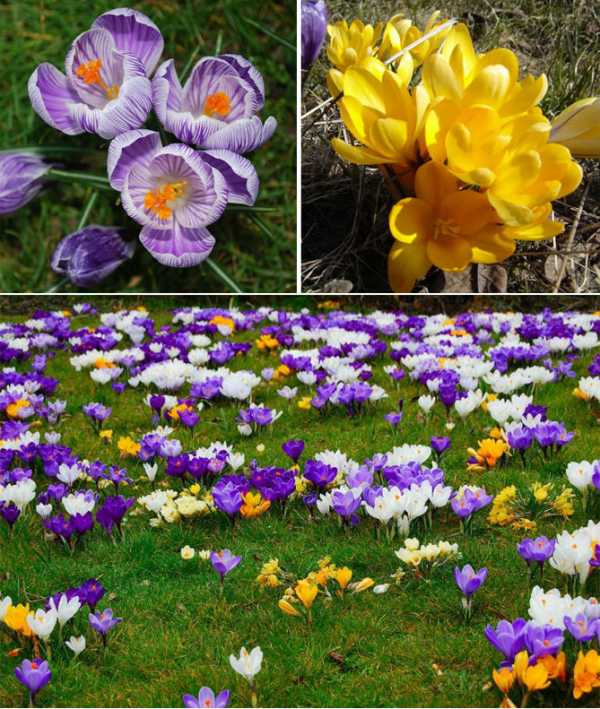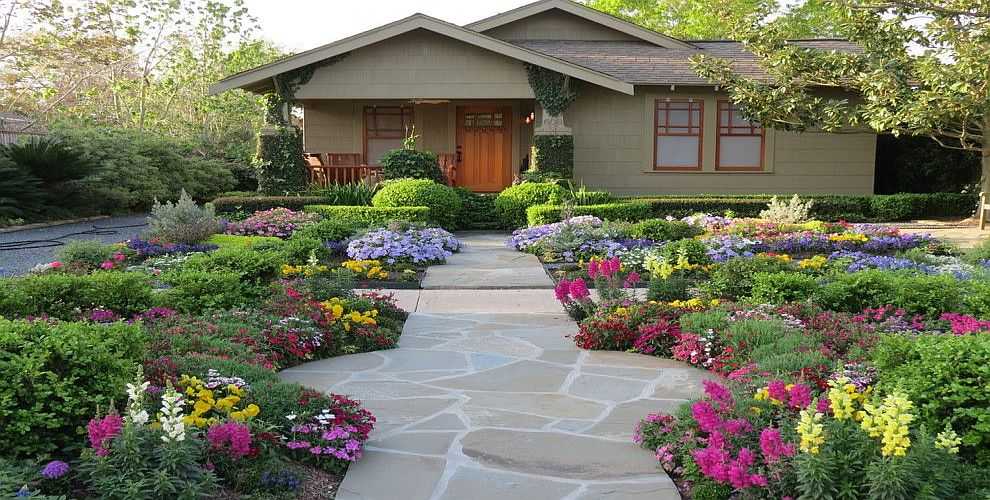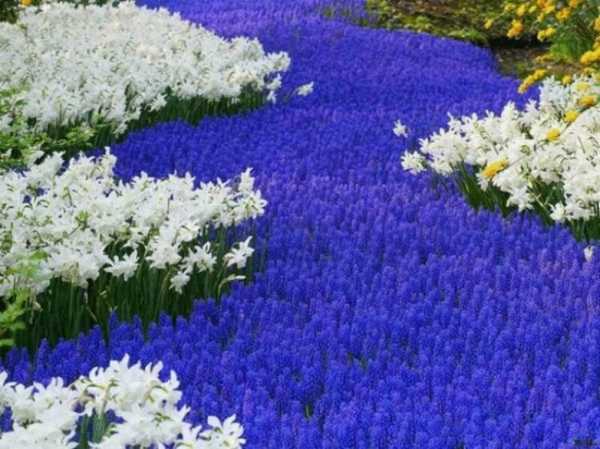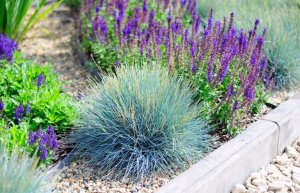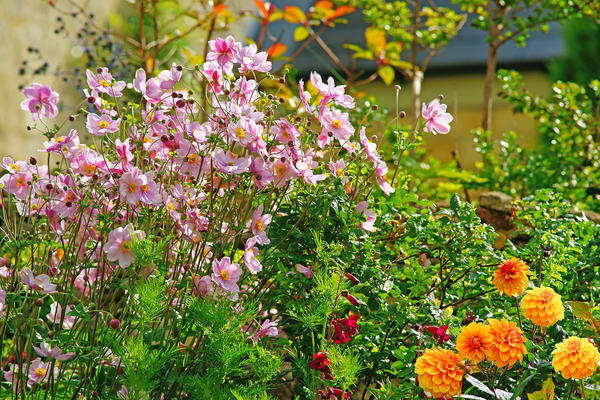Lilies
Liliaceae look very good in garden decoration. Each owner can choose absolutely any color of lilies for his plot - classic orange, white, yellow or burgundy.
Lilies are planted with bulbs... These representatives can grow in one place for several years. They do not like transplants, so you should choose a bright, sunny place. The stem of liliaceae is high, up to a meter. If there are frequent winds in your area, then the flower will need a support.
Lily loves loose soil, with good drainage. Planting bulbs must be healthy, not overdried and of good quality.
They can be planted in autumn, in October. If the planting material is purchased in advance, it is stored in the refrigerator, in a vegetable drawer. In the spring, planting is carried out at an air temperature of +10 degrees. In case of frost, the soil is covered with a layer of straw and hay. The features of caring for lilies are simple: the flower should be in the sun, and the roots in the shade.
Among the lilies, you can plant undersized flowers that will shelter the roots from overheating and regulate soil moisture. You need to feed the plant during the growth period in the spring, when the flowers ripen, and in the fall, for recovery. In the first year, it is advisable to cut off the peduncle - this way the bulb will get stronger and next time it will delight you with abundant flowering.
If the garden is located in an area with a cold and damp climate, then it is advisable to dig up the lily bulbs in the fall, then store them in a cool room without overdrying, and plant them again in the spring.
Of the pests of lilies, the lily beetle with its larvae is dangerous. He eats leaves and flowers. You can protect the flower by treating it with karbofos.
Chrysanthemum maiden
Chrysanthemum maiden is perfect as flowers for the border, another name is maiden's matrix.
This is a representative of the Aster family, which is used by gardeners as an annual due to the fact that it is extremely difficult to preserve the plant in winter in the middle climatic zone. In appearance, the flowers of maiden chrysanthemum resemble a large chamomile and retain the same color. Inflorescences 3-4 cm in diameter. Plant height varies from 25 to 70 cm. Leaves are pinnately dissected, light green in color.
Chrysanthemum fell in love with many gardeners for the reason that it perfectly withstands drought, cold and grows on almost all more or less fertile soils. For planting on the curb, dwarf varieties are used in their pure form, or in tandem with ageratum.
Did you know? The name "maiden chrysanthemum" comes from the fact that the action of the plant can relieve pain and inflammation that occurs in girls during menstruation.
Dahlia came to us from Mexico, it was used for landscaping by the ancient Indians, calling it various names, which in translation meant "a flower with a hollow stem." We will talk about annual varieties and hybrids of dahlias, and how they are better than perennials.
The height of annual plants varies from 80 to 120 cm, the diameter of the bud is from 10 to 12 cm. Up to 15 peduncles develop on one bush, which appear quite early and are pleasing to the eye throughout the summer, in contrast to perennials, which in the first year of planting and may not bloom at all. Flowers are baskets, the petals of which are painted in various bright colors (red, blue, white and their shades).
Another advantage of annual dahlias is ease of care and great resistance to diseases and pests. It is also worth noting that dahlias feel great in the middle climatic zone.
Did you know? The plant began to be called dahlia only in 1803, after the German botanist Karl Wildenov changed the Latin name and gave the flower a middle name in honor of the Russian botanist and geographer Johann Georgi.
The nasturtium family gave us another flower for the borders in the person of the annual and of the same name nasturtium, which is also popularly called "capuchin". The family contains about 90 species that came to us from Central and South America.
Important! There are also perennial varieties of nasturtium, so review the seed packaging carefully before purchasing. Beautiful annual flowers for your flower bed: clarkia, heliotrope, forget-me-not, rudbeckia, heliantemum
Beautiful annual flowers for your flower bed: clarkia, heliotrope, forget-me-not, rudbeckia, heliantemum.
Belongs to the Aster family, the genus has about 60 species, distributed in North and South America, as well as in Eastern India. Ageratum, depending on the variety, can be an annual or perennial, herb or shrub.
The plant has numerous branched stems varying in height from 10 to 50 cm. The leaves can be in the form of a diamond, triangle or oval, dark green in color with small light stripes. The flowers are very small, collected in small baskets, and those, in turn, are collected in large inflorescences. The buds are colored blue, white or pink.
Important! Ageratum juice can cause allergic reactions. In the role of border plants, dwarf or undersized variations are used.
They grow compact and have enlarged dense inflorescences.
In the role of border plants, dwarf or undersized variations are used. They grow compact and have enlarged dense inflorescences.
Annual flowers grown without seedlings for a summer residence, blooming all summer with a photo
Annuals that can be grown easily and quickly without seedlings are often called helpers for the summer resident. Any florist is familiar with the situation when, due to poor-quality planting material or for some other reason, there are not enough seedlings to decorate a flower bed. This is where flowering plants can come to the rescue, which will quickly grow and bloom, being planted directly in open ground. Among these, there are many annual flowers blooming all summer long (with photo and name)
Arctotis
Arctotis annual flowers
An elegant flowerbed annual growing up to 40 cm, persistently reminiscent of chamomile. But a single inflorescence (up to 8 cm in diameter) on a high branched stem is distinguished by its multi-color: white, yellow, red, purple, orange. There is a peculiarity: with a lack of lighting, the flowers close. Prefers brightly lit flower beds with good drainage. Blooms from July to October.
Limnantes Douglas
Limnantes Douglas annual flowers
A short bush about 15 cm tall and the same in width with white-yellow pleasantly smelling flowers. Loves sunny areas and regular watering. To get 100 plants, you need only 2 g of seeds, which must be sown 3 per nest with a distance of 25 cm. The seedlings will hatch in a week. Flowering continues until frost.
Toadflax Moroccan
Annual flowers Toadflax Moroccan
Bush height - up to 45 cm with a width - up to 15 cm. Easily tolerates drought, light-requiring. Toadflax flowers can be of two colors with a wide range of coloration. The seeds are small, so 100 plants will be obtained from 0.05 g of seeds. They sprout on 15 or 20 days, too densely spaced shoots must be thinned out. There should be 15 cm between them. It blooms from June to the end of August. If you prune and fertilize, they will bloom again.
Californian eschscholzia
Annual flowers Californian Eschscholzia
Reminds us of our poppy. Grows well on hills with open sun. Will die if flooded. Sandy, slightly acidic soils with good outflow of water are suitable for her.After sowing, it rises in 2 weeks, it must be planted at a distance of 20 cm from the neighbor. It is not aggressive, therefore it gets along with many plants of similar preferences: carnation, purslane, lobelia, cornflower, flax, chamomile.
Lavatera three-month
Annual flowers Lavatera three-month
Tall plant (up to 1.2 m) with pink or white flowers. Loves a lot of light and moisture. Sow in nests of 3 seeds every 35 cm. It sprouts in a week. Blooms all season. It can either be a good backdrop for smaller annuals, or will look great in mono plantings along the hedge.
Large-flowered flax
Annual flowers Large-flowered flax
Grows up to 75 cm. Loves light and moisture. The flowers are white, red or purple with blue. 100 plants will grow from 1 g of seeds. Plant 3 seeds every 15 cm into the nest. It emerges in 10 days, blooms throughout the season. It is often used in rural compositions.
Canna
This stately flower (up to 3 m high) pleases the eye from June to late autumn. Leaves are large, elliptical or oval-oblong, pointed, (25-80 cm long and 10-30 cm wide), green, striped or purple-bronze. The flowers are red, orange, yellow, pink or white. They are located on tall stems and do not wither until frost.
Canna is completely unpretentious, almost does not get sick and does not attract harmful insects, even if it is not treated with anything. However, in the middle lane it is not able to spend the winter without good cover. The plant is native to the tropics, so our harsh winters are not to her liking.
Cannes in autumn: proper care and preparation of flowers for winter
All about storing cannes in winter at home, basement and cellar.
Ways to combine low varieties of flowers in the front garden
When decorating a flower bed with low-growing flowering plants, you should be guided by the following rules:
- in the middle of spring, the center of the flower bed is being decorated. The middle part is best decorated with agratum (this flower is planted with seedlings) - this will make it possible to form a lush center of the flower arrangement;
- surrounded by ageratum recommends planting flax (annual variety). It is sown at the end of April, the most popular variety with burgundy inflorescences "Ruby" and a white variety with a beautiful name "Clear Eyes";
- flax can be supplemented with a mixture of dwarf asters - they are planted with seedlings in early May. Asters will delight the eyes until the second decade of October;
- it is advisable to start the design of the border zone in mid-spring. Borders are most often decorated with shaved - a plant with small inflorescences and lush flowering.
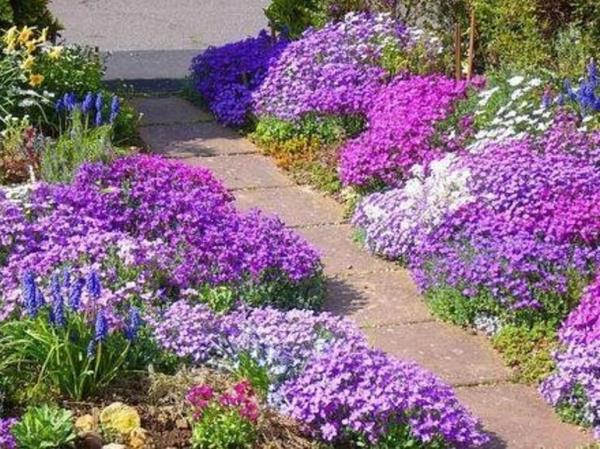
This is one of the possible options for decorating flower beds and flower beds, but you can choose any other. There are many varieties of ornamental plants that bloom throughout the summer, the main thing is to choose the right combinations.
Important! When choosing varieties, select them so that the plants do not interfere with the growth of each other and need approximately the same conditions - only in this case you can create a presentable flower bed decor that will be combined with the overall design of the site.
Experienced gardeners who are fond of flower cultivation believe that the most attractive are compositions that include flax, multi-colored asters and meadow cornflowers.

To make the design of the flower garden as presentable as possible, perennial plants should be combined with low-growing annuals.
From this video you will learn about the features of growing phlox:
It is not difficult to beautifully decorate rock gardens, rabatki and other types of flower beds in the backyard. Beautifully flowering perennial and annual low-growing plants that cover the soil, in addition to being undemanding in care, also protect the soil from weeds. Low flowering plantings have many advantages, which is why they are so popular.

By choosing the right ornamental plants of small height, you can form original and at the same time harmonious combinations, thanks to which the flower bed will become a highlight in landscape design.
A competent approach to decorating flower beds with dwarf and undersized flowering plants will allow you to create aesthetic compositions that will delight you throughout the warm season.
Before and after the summer season
And what kind of perennial flowers for the garden, unpretentious long-flowering, will grow on a flower bed in your garden immediately after the snow melts and in late autumn?
Spring freshness
Familiar and beloved by everyone, such diverse perennials - tulips, require annual digging of bulbs, rather complex preventive manipulations, and thus do not fall into our list for the "flower bed of the lazy".
Be sure to plant all the familiar crocuses, daffodils, low and tall irises (different flowering periods), primroses, peonies and add the following types of flowers to them.
Chionodox "Glory of all snows". The very first bulbous plants in flowering time. Plant preferably in groups. Peduncle height - 15 cm. White flowers with a diameter of 3 cm bloom in the "basket" of pointed leaves. Duration of flowering - 14 days.
Snowdrop Flore Pleno. Single flowers, which at the very beginning resemble an orchid, and as they bloom, turn into a white, with yellowish and greenish stripes, terry small "carnation" against the background of 3 large white petals.
Spring white flower. Despite the unprepossessing name, these are very elegant and large white "snowdrops". The bell-shaped inflorescences, with green balls at the ends of the petals, have a pleasant smell and bloom from early April to mid-May. To prolong flowering, plant the plants in groups, in which there should be an equal share of the Summer White Flower, differing only in the calendar dates of flowering - from mid-May to the end of June.
Pay attention to the numerous varieties of Muscari primroses, which will successfully replace the capricious hyacinths. To attract pollinating insects, plant several Corydalis bushes (choose color and shape) and a group of monochrome yellow Erantis chiemelis
An unexpected guest on the spring flower bed will be the Amur Adonis (Adonis), which will not only delight the eye, but also heal the nerves. A characteristic feature is the absence of leaves. Therefore, it is best to plant in small, dense groups.
Don't forget about Forget-me-nots! Although it is an annual plant, thanks to its excellent self-seeding, a carpet of small flowers will be a good "substrate" for all flowers blooming from early April to late June. By the way, the breeders tried and repainted the flowers of forget-me-nots in all colors of the rainbow, while leaving their leaves with healing power - the infusion helps with chronic lung diseases and is used to reduce excessive sweating. Forget-me-nots can be replaced with perennial Arabis - this is a magnificent ground cover crop of white, pink, raspberry, red and all shades of purple.
Autumn crimson
To meet the first snow, you need to prepare in advance and plant several varieties of chrysanthemums in the spring. Green "balls" from Khosta will be good decorative spots. Sedum looks great - dense, "appetizing" bushes with red inflorescences. An unexpected surprise will be the use of vegetable annuals. Standard dwarf tomatoes and perennial fennel - in the border row, and ornamental cabbage - in the second tier, will surprise adults and delight children.



